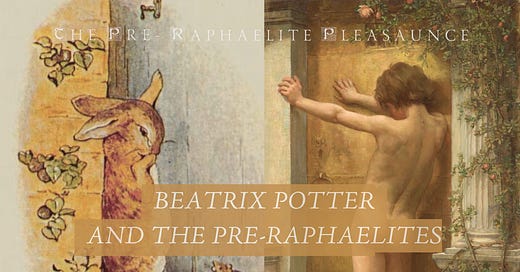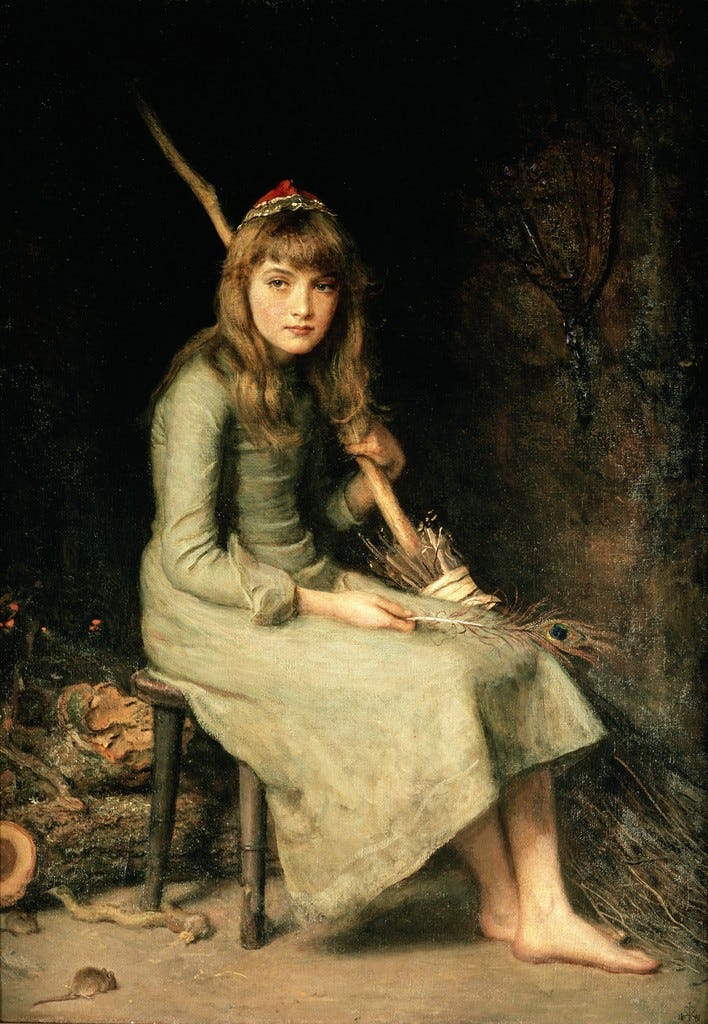Beatrix Potter and the Pre-Raphaelites
Exploring how Pre-Raphaelitism and Naturalism helped shape the world of Beatrix Potter
“'Mr. Millais came here in the evening,' she breathlessly re-corded, 'to get Papa to photograph next morning' . . . Millais on that occasion had casually asked her how she was getting on with her drawing. 'My certes, I was rather alarmed, but he went to another subject in a second …' Millais' genial presence still alarmed her; his was not a world that she could aspire to enter.”
John Everett Millais was a close friend of Beatrix Potter’s father, Rupert Potter, whose photography he greatly admired. He often requested Potter’s photographic services in capturing specific landscapes or natural elements, such as an apple tree or a gentle stream, that Millais could later reference while building his detailed scenes.
Beatrix recorded numerous journal entries referencing the frequent visits of “Mr. Millais” to the Potter household. In turn, Rupert Potter also made many social calls to the Millais family home and often visited Millais’ studio, traveling with his large-format camera and portable equipment for the newly developed dry-plate process (invented in 1871) to photograph sitters for Millais’ portraits (Lane, 1978).

“Mr. Millais says the professionals aren’t fit to hold a candle to papa.”
From a journal entry of Beatrix Potter,
Quoted from The Journal of Pre-Raphaelite Studies
Beatrix recounts her first visit to Millais’ studio:
11th of November, 1883 — “Went with papa and mamma to Mr. Millais’. First time I ever was in the house oddly enough. Hadn’t the least idea I was going, which was perhaps as well, or I should have been more nervous. After thinking in a sleepy way about the chance of going, its coming true seems like a dream. He was very kind indeed.”
As a child, Beatrix was “unmercifully afraid of” Millais, recalling that he often made her blush “a brilliant colour as a little girl, which he used to provoke on purpose and remark upon at times.” Later, she comically described Millais as “one of the handsomest men I ever saw, apart from the defect of his eye, and the odd mark across his forehead.” Though Beatrix formed a very observant and often critical eye (and sometimes all together dismiss attitude towards well-known art), Millais’ work seemed to have a lastly impression on her—though, as you will see a bit later, not always positive one.






